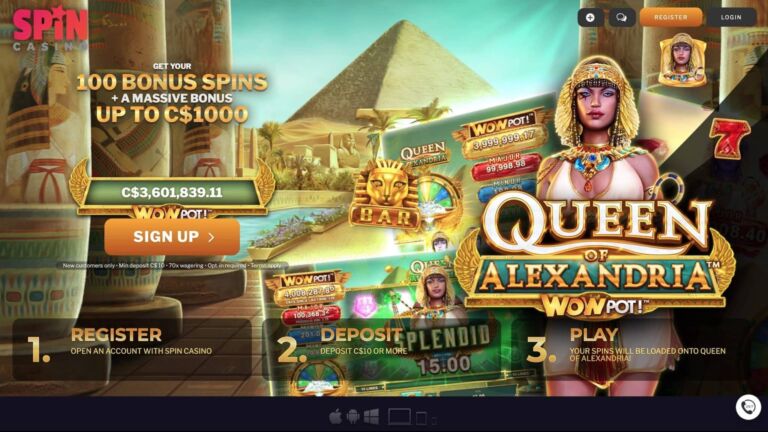Mastering the skill of reading your foes in online poker is essential to success in modern digital poker games, where visual cues are replaced by user handles and avatars. To succeed, players need to thoroughly understand the digital and behavioral nuances displayed in betting styles, going beyond the traditional methods of reading other players’ strategies and predicting their moves.
Unlocking Digital Insights: Navigating the World of Online Poker Cues
As poker has shifted from physical tables to the virtual environment, the nature of reading opponents has significantly changed. The live game’s reliance on subtle gestures and expressions is missing online. Instead, players must adapt to a digital communication style—understanding elements like betting behaviors, timing, chat interactions, and online statistics provided by HUDs. This evolution requires updating how one observes and interprets, focusing on digital traces and economic behaviors within the gaming software.
In online games, the veil of anonymity changes the psychology of poker. Players might take more risks or play more cautiously due to the lack of face-to-face interaction. It's essential to understand these psychological factors as they play out in online scenarios, helping you forge a strong strategy for interpreting opponents in the digital gaming landscape. The real challenge lies in differentiating genuine betting signals from those meant to mislead.
Overview of Online Poker Tells: An In-Depth Exploration
Online poker tells fall into several categories, each offering unique insights into an opponent's game and strategy. These include timing tells, betting pattern tells, chat tells, and data-based tells with the help of HUD tools. By carefully observing these indicators, players can gather information to build a strategy against their competitors.
The Influence of Timing: Analyzing Decision-Making Patterns
The speed at which an opponent plays in an online poker session, such as how long they take to make a decision, can offer insights similar to those of live poker. Quick or slow decisions might hint at the player’s hand strength, though it’s essential to interpret such timing tells carefully, as they can be affected by poor internet connections or deliberately misleading tactics by savvy players.
Deliberation before making a choice, especially in moments like reacting to a large bet late in the game, could indicate uncertainty or weakness. Rapid decisions in response to aggressive betting might point to a confident hand. However, smart players might change their timing to throw you off, which is why it’s best to consider timing in combination with other factors and over many hands.
The consistency with which a player makes decisions is another element of timing tells. A player usually quick to act who then deliberates before a substantial bet might reveal hand strength. Conversely, if a typically slow player suddenly acts quickly, it might signal confidence in their hand. Deviations from normal timing habits provide more information than just the time spent per decision.
Understanding Betting Patterns: Unlocking the Language of Bets
Betting patterns become the primary form of communication online when visual cues are absent, making them crucial for reading opponents. These include analyzing bet sizes and frequency concerning player positions and board texture. Changes or anomalies in betting behavior can reveal insights into an opponent’s hand.
Atypical small bets by usually aggressive players might indicate caution or testing the waters without committing too much. Large bets from players who usually bet small could signify strength or a bluff. It’s essential to know a player's typical betting patterns and notice whenever they stray from these norms.
The order and size of bets through the rounds can also offer clues. Consistent raises early on might suggest strong hands or bluffs, while aggression in later stages could indicate improved hands. Observing how betting changes occur through the stages of a game, considering board changes, is vital to understanding opponents. The ratios of bet sizes across flop, turn, and river rounds can also shed light on strategy and hand strength.
Chat Box Analysis: Words as Game Influencers?
Online poker chat rooms offer a text-based channel for players to communicate, though it is often used for misdirection. How players chat can occasionally hint at their confidence or emotional state. While chat tells can be unreliable and manipulative, they can offer additional context when interpreted carefully.
Boastful or excited chatting, especially after a win or significant move, can sometimes reflect an inexperienced player trying to show confidence. Conversely, a sudden quietness from a usually vocal player might indicate frustration influencing their play. However, players may also use chat strategically to mislead opponents.
Genuine emotional slips in chat are rare but insightful. For example, sincerely complimenting a good play after folding might show frustration. Observing players who consistently joke at their own expense might signal a more passive or cautious play style. Chat interactions should ideally reinforce observations made through other tells, rather than serving as the primary source of information.
Statistical Insights: Utilizing Heads-Up Displays (HUDs) Effectively
Heads-Up Displays (HUDs) provide real-time stats overlaying poker games, giving insight into opponents’ habits, such as how often they enter pots or raise pre-flop. These statistics allow players to make data-informed decisions, though it’s crucial to understand their implications and limitations fully.
High VPIP and PFR stats can point to a player who is frequently involved and aggressive, while low figures suggest a player who bets cautiously. Recognizing how opponents prefer to play before the flop is key for tailoring your strategy. Remember, the more hands the data is based on, the more reliable it is. Use HUD data conservatively early in a game until more hands are played.
Statistics like the Aggression Factor (AF) and aggression frequency (Agg%) provide insights into how frequently a poker player engages in betting and raising compared to calling and checking. High values in these stats suggest a player who might bluff more often or generally play aggressively, whereas low values could indicate a player who may only bet strong hands. Additionally, HUD stats such as continuation bet percentage, fold to continuation bet percentage, and 3-bet percentage give deeper insights into an opponent's strategy both before and after the flop. Making effective use of HUDs means not just reading the values, but also interpreting them to understand an opponent's strategy and leverage it. It's crucial to note that some poker platforms do not allow HUDs, and it's important for players to respect the regulations of the sites they play on.
Sophisticated Strategies for Identifying Online Opponents
Delving beyond basic online poker tells, advanced strategies involve gathering information from various sources, flexibly adjusting based on new data, and using psychological insights to predict how opponents might act. Mastering these complex strategies requires practice, sharp observation, and a deep comprehension of the intricate nature of online poker.
Identifying Patterns and Analyzing Deviations
In-depth online poker analysis heavily relies on detecting patterns. This starts with building a foundational understanding of an opponent's usual behavior, covering aspects like timing, betting habits, chat activity, and statistics. Once this baseline is formed, it becomes crucial to spot deviations. Deviations, such as a notable bet size change from a player who generally employs small bets, or a switch to slow play from a typically speedy player, are often more telling than any isolated action. This kind of analysis demands thorough note-taking and a system for consistently tracking how opponents play over time.
For example, if a player typically shows a passive approach before the flop (low Pre-Flop Raise, or PFR, stats), but unexpectedly 3-bets in a specific situation, this divergence is significant. It might indicate a strong hand or perhaps a well-timed bluff to take advantage of their image. Likewise, if a player known for quickly calling pre-flop raises suddenly hesitates, it could suggest a tricky hand or a tough decision. The strength of pattern recognition is in detecting these minor but telling changes that reveal shifts in an opponent's hand strength or game plan.
Understanding the Context: Board Dynamics, Player Position, and Game History
Contextual interpretation involves understanding poker tells by considering the current game dynamics. This requires factoring in board conditions, the relative position of players, and past interactions. A bet size that signals strength in one scenario might indicate weakness in another. For instance, a small continuation bet on a dry board might be a bluff, whereas on a complex, wet board, the same size could indicate a value bet aimed at eliciting calls from weaker hands. The influence of position is also crucial; bets from early positions typically carry more weight than those from later positions like the button.
Past interactions with a particular opponent build a profile that aids in interpreting current actions. If an opponent has a history of bluffing with large bets, a sizeable bet now might be met with skepticism. Conversely, if they consistently reveal strong hands after specific betting patterns, those become trustworthy signals of strength. Contextual reading evolves continuously, refining as more information becomes available and as the game develops.
Profiling Opponents Psychologically: Recognizing Player Types
Psychological profiling in online poker involves grouping opponents into categories based on their observed actions and habits. Although every player is unique, common psychological profiles emerge in online poker. Identifying these can help anticipate an opponent's actions and craft strategies to exploit these tendencies. Common types include the 'Nit' (extremely conservative and passive), the 'Calling Station' (frequently calls, less aggressive), the 'Maniac' (very aggressive and prone to excessive bluffing), and the 'Solid Regular' (balanced and strategic in their approach). This profiling is a dynamic process, enhanced through keen observation and analysis.
For example, when playing against a 'Nit' (as suggested by very tight VPIP and PFR statistics), a large river bet is likely to signify an exceptionally strong hand, leaving little room for bluffing opportunities. On the other hand, against a 'Maniac', who displays high aggression, large bets might deserve more scrutiny, and it can be profitable to call with decent but not exceptional hands to capitalize on their tendency to bluff. Understanding these profiles enables more precise read development and allows for targeting opponent patterns. However, avoiding rigid assumptions is key, as players can change their styles, requiring flexible and adaptive reads.
Understanding the Limitations and Ethics of Online Poker Tells
While understanding opponent behavior in online poker is beneficial, it's important to recognize its limitations and ethical concerns. Online tells are inherently less reliable than live tells due to their virtual nature and vulnerability to manipulation. Relying too much on one type of tell, or neglecting context, can lead to misguided judgments. Additionally, the use of Heads-Up Displays (HUDs) and other software raises ethical questions about fairness.
The Impermanence of Individual Tells : No single online tell provides absolute certainty. Timing can be affected by connectivity issues, betting patterns can be intentionally altered, chat interactions are often misleading, and HUD stats depend on the sample size. Effective online play requires integrating information from multiple sources, constantly reevaluating as more data becomes available. Relying on one tell can lead to significant misjudgments, whereas understanding patterns and probabilities can offer more reliable information.
Responsible Use of HUDs and Technology : The use of HUDs and similar tools is a contentious issue in online poker. Though allowed on many platforms, they raise fairness concerns, particularly for casual players who may lack access or knowledge of these tools. Some contend that HUDs create disparities in the game, favoring those skilled with data analysis over those who rely on pure skill and intuition. Consequently, certain sites have banned HUDs to maintain a balanced playing environment. Being aware of the ethical aspects and the specific platform regulations is crucial. Preserving a fair and responsible gaming atmosphere should always remain a priority.
Final Thoughts: Excelling in the Digital Poker Arena
The journey to mastering the skills of reading opponents in online poker requires ongoing learning, adaptation, and skill in interpreting digital behaviors. Although the absence of physical tells presents unique challenges, the online setting offers new dimensions to explore through timing, betting behaviors, chat exchanges, and statistical analysis. Enhancing one's observational skills within these digital landscapes, and combining advanced methods like pattern detection, contextual reading, and psychological profiling, can greatly improve a player's ability to understand opponents' strategies and achieve a competitive advantage. Excelling in digital poker demands a keen awareness of the intricate signs found in digital responses, bets, and behavioral shifts, turning the virtual poker table into a rich field for observation and analysis.
External Resources:



